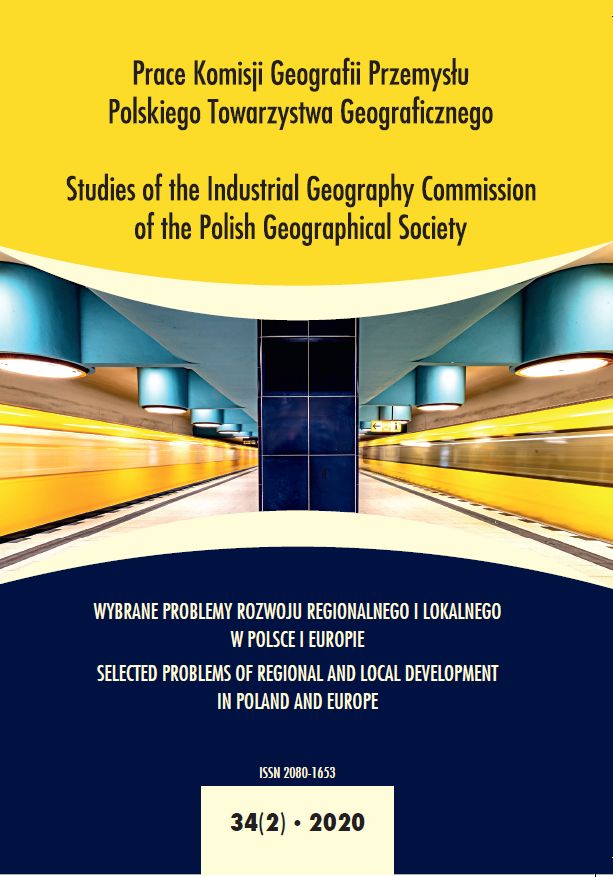Characteristics of the Book Market Based on Scenarios of Environment Conditions
DOI:
https://doi.org/10.24917/20801653.342.10Keywords:
book market, hypertext, macro‑environment components, scenario method of environment conditionsAbstract
Books are the final product of the process, which consists of the phase of an individual or collective creative process, production phase implemented in the enterprises of the printing industry and the service phase consisting in the dissemination, distribution and commercialisation of the product. The whole process is therefore very complex due to its alternating intangible and material nature, which, apart from the economic dimension, also has a social dimension. Therefore, the product is highly sensitive to the processes occurring in the broad culture susceptible to national environmental influences determined by global processes. The goal of the work was a general description of the book market presented in a strategic perspective in the light of dynamic changes taking place in its environment. The use of the scenario method of environment conditions for analysing the book market was used to better identify the macro -environment components that can have a decisive impact on the functioning of the book market. Based on the results obtained, it seems that there will probably be a further increase in access to the texts, based on modern technologies. The key factor determining the further development of all links in the book market will be the socio -cultural factor, which is associated with the transition towards information society (hypertext) in which information itself and the convenient medium of its message are important.
Downloads
Metrics
References
Augustyn., K. (2017). Od produktu do usługi. Przemiany na rynku książki w epoce nowych mediów. Folia Bibliologica, LIX, 71–95.
Dobrowolski, Z. (2001). Nowe formy książki. Możliwości i zagrożenia. Przegląd Biblioteczny, 3, 199–207.
Drapińska, A., Liberadzka, B. (2017). Trendy na rynku książki w Polsce – wybrane aspekty. Handel Wewnętrzny, 5(370), 111–120.
Gierszewska, G., Romanowska, M. (2002). Analiza strategiczna przedsiębiorstwa. Warszawa: Polskie Wydawnictwo Ekonomiczne.
Gołębiewski, Ł. (2010). Rynek książki w Polsce 2010. Warszawa: Biblioteka Analiz.
Koryś, I., Michalak, D., Zasacka, Z., Chymkowski, R. (2018). Stan czytelnictwa w Polsce w 2017 roku. Warszawa: Biblioteka Narodowa.
Kozioł, K. (2010). Analiza strategiczna przedsiębiorstwa na poziomie makrootoczenia. Studia i Prace Wydziału Nauk Ekonomicznych i Zarządzania Uniwersytetu Szczecińskiego, 17, 77–88.
Kwiecińska, M. (2016). Wybrane metody analizy strategicznej otoczenia w planowaniu operacji reagowania kryzysowego – ujęcie teoretyczne. Obronność, 2(18), 108–128.
McLuhan, M. (1962). The Gutenberg Galaxy: the making of typographic man. Toronto: University of Toronto.
Osiewała, R. (2013). Czy biblioteki i książki przetrwają próbę czasu: od książki drukowanej do e‑książki, od biblioteki tradycyjnej do wirtualnej. Łódź: Wydawnictwo Uniwersytetu Łódzkiego.
Penc‑Pietrzak, I. (2010). Planowanie strategiczne w nowoczesnej firmie. Warszawa: Wolters Kluwer Polska.
Rychlewski, M. (2013). Książka jako towar – książka jako znak. Gdańsk: Katedra – Wydawnictwo Naukowe.
Turrin, E. (2017). The book sector in Europe: facts and figures. Federation of European Publishers.
Zygierewicz, A. (2015). Rynek książki w wybranych państwach. Warszawa: Biuro Analiz Sejmowych.
Downloads
Published
How to Cite
Issue
Section
License
Articles are published under the terms of the Creative Commons License (CC BY-ND 4.0; Attribution– NoDerivs).

